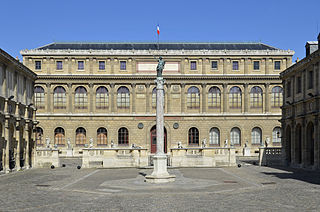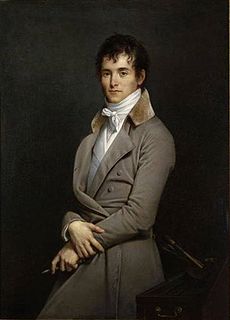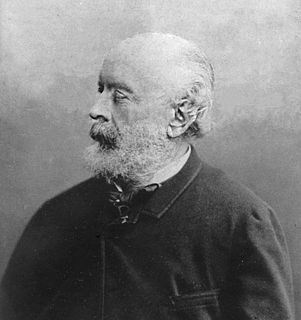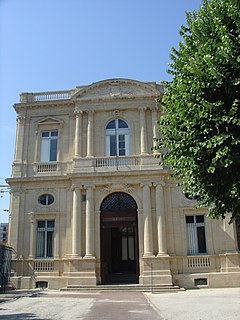
Pierre Bodard (15 April 1881, Bordeaux - 18 June 1937, Paris) was a French painter, best known for his scenes depicting the West Indies.

Pierre Bodard (15 April 1881, Bordeaux - 18 June 1937, Paris) was a French painter, best known for his scenes depicting the West Indies.
He began his studies at the School of Fine Arts in Bordeaux with Paul François Quinsac and continued at the École des Beaux-Arts with Gabriel Ferrier. In 1909, he was awarded the Prix de Rome for his depiction of Ceres saving the life of a child. [1] While at the French Academy in Rome, he studied with Carolus-Duran and Paul-Albert Besnard. [2] From Rome, he travelled throughout the Mediterranean, visiting North Africa, Greece, Turkey and Spain; all the while sketching and painting.
He was mobilized in 1915, stationed on Martinique, [1] and married in Fort-de-France. As a result, he did not return to Paris until 1920. He remained emotionally attached to the island for the rest of his life, and was an active participant in events and exhibitions related to the "Outre Mer", notably the 1931 Paris Colonial Exposition.
He was an Associate of the Society of French Artists and exhibited regularly at the Salon from 1908 to 1932. [2] In addition to his paintings of the West Indies, he created scenes from the Basque Country. After many years as a history and genre painter, he gradually focused on orientalist and marine painting, as well as portraits.
In 1921, he was officially named a "Peintre de la Marine". [1] Five years later, he was awarded the Ordre des Palmes Académiques (Silver Palm). In 1933, he received the Gold Palm.

Les Nabis were a group of young French artists active in Paris from 1888 until 1900, who played a large part in the transition from impressionism and academic art to abstract art, symbolism and the other early movements of modernism. The members included Pierre Bonnard, Maurice Denis, Paul Ranson, Édouard Vuillard, Ker-Xavier Roussel, Félix Vallotton, Paul Sérusier and Auguste Cazalis. Most were students at the Académie Julian in Paris in the late 1880s. The artists shared a common admiration for Paul Gauguin and Paul Cézanne and a determination to renew the art of painting, but varied greatly in their individual styles. They believed that a work of art was not a depiction of nature, but a synthesis of metaphors and symbols created by the artist. In 1900, the artists held their final exhibition and went their separate ways.

The Beaux-Arts de Paris is a French grande école whose primary mission is to provide high-level arts education and training. This is classical and historical School of Fine Arts in France. The art school, which is part of the Paris Sciences et Lettres University, is located on two sites: Saint-Germain-des-Prés in Paris, and Saint-Ouen.

Pierre-Narcisse, baron Guérin was a French painter born in Paris.

Léon Cogniet was a French history and portrait painter. He is probably best remembered as a teacher, with more than one hundred notable students.

Évariste Vital Luminais was a French painter. He is best known for works depicting early French history and is sometimes called "the painter of the Gauls".

Jean Alaux, called "le Romain", was a French history painter and Director of the French Academy in Rome from 1846–52.

Jean-Achille Benouville was a French landscape painter known for his views of Italy.

The Musée des Beaux-Arts de Bordeaux is the fine arts museum of the city of Bordeaux, France. The museum is housed in a dependency of the Palais Rohan in central Bordeaux. Its collections include paintings, sculptures and drawings from the 15th century to the 20th century. The largest collection is composed of paintings, and its strong points are works by French and Dutch painters.

Jean-André Rixens was a French painter, known for his classical scenes and portraits.

Jacques de Létin, or Jacques Ninet de Lestin, or Jacques de L'Estin was a French painter, primarily of religious scenes. He was also trained as a goldsmith.

Édouard Joseph Dantan was a French painter in the classical tradition. He was widely recognized in his day, although he was subsequently eclipsed by painters with more modern styles.

Adrien Manglard was a French painter, draughtsman, and engraver. He was a skilled marine painter, who was able to rapidly advance his career in Rome thanks to his compositional skills, selling paintings to clients such as the Rospigliosi family, Victor Amadeus II, King of Sardinia, and Philip, the Duke of Parma. The latter alone commissioned more than 140 paintings from Manglard.

Pierre Lacour, originally Delacour was a French painter.

Gabriel-Joseph-Marie-Augustin Ferrier was a French portrait painter and orientalist.

Bernard-Joseph Wamps was a French painter; mostly of religious subjects.

Jean-Pierre Granger was a French painter who worked in the Neo-Classical style. He is primarily known for portraits, history paintings and mythological scenes, but also created numerous religious works. Some sources incorrectly call him Jean-Perrin.

Pierre-Nicolas Brisset was a French painter and muralist in the Academic style. He is best known for his mythological, historical and religious scenes, but also painted landscapes and portraits.

Eugène Robert Poughéon born in Paris, was a French artist, painter, illustrator and museum curator.

Pierre Lacour, sometimes referred to as "The Younger" was a French painter and engraver.

William Julien Emile Edouard Laparra was a French painter of portraits and genre scenes. The composer, Raoul Laparra, was his younger brother.
![]() Media related to Pierre Bodard at Wikimedia Commons
Media related to Pierre Bodard at Wikimedia Commons